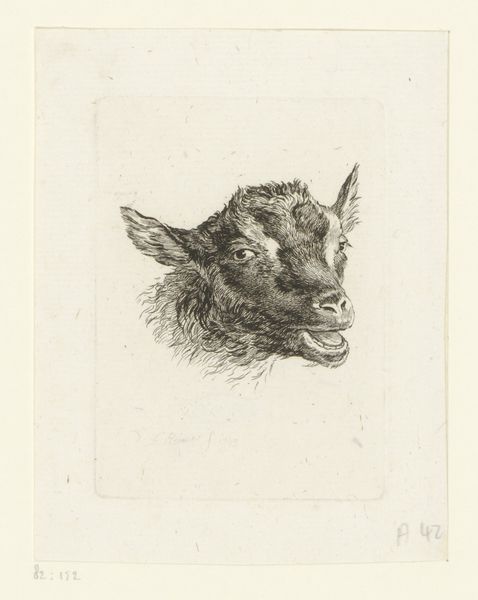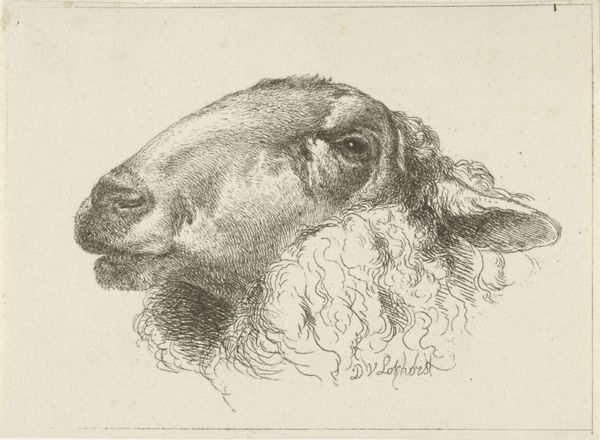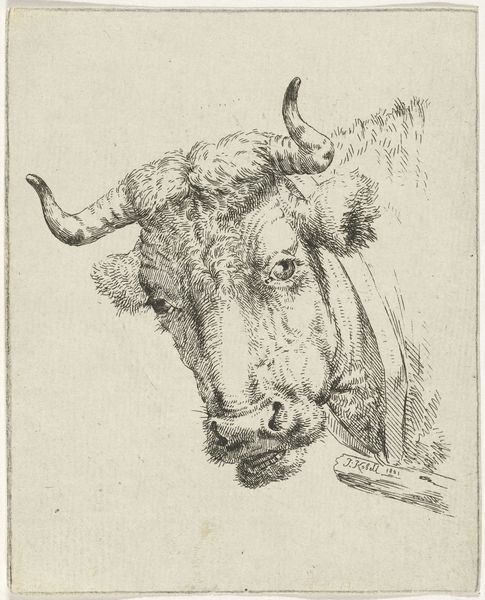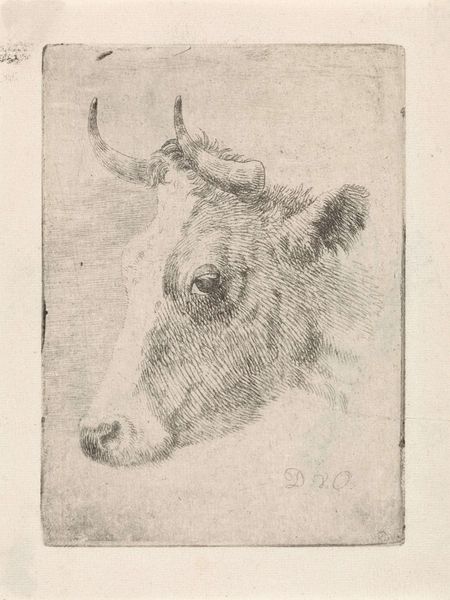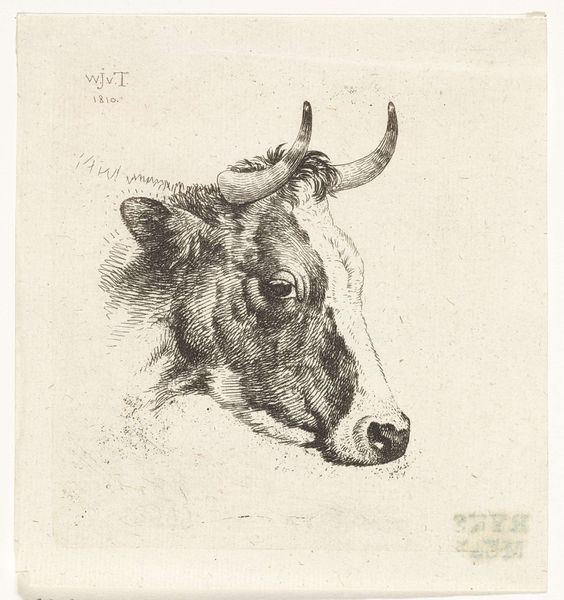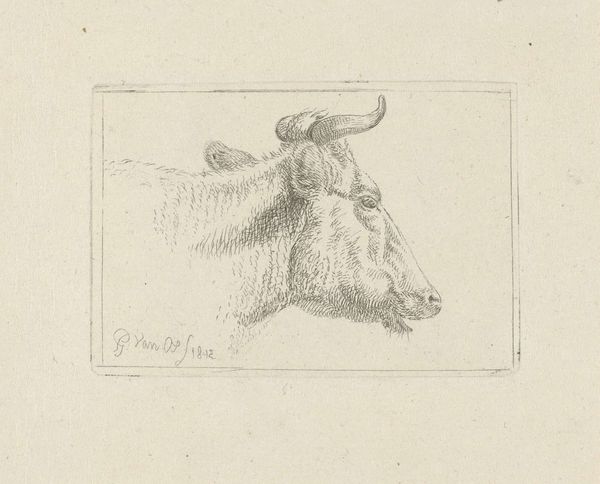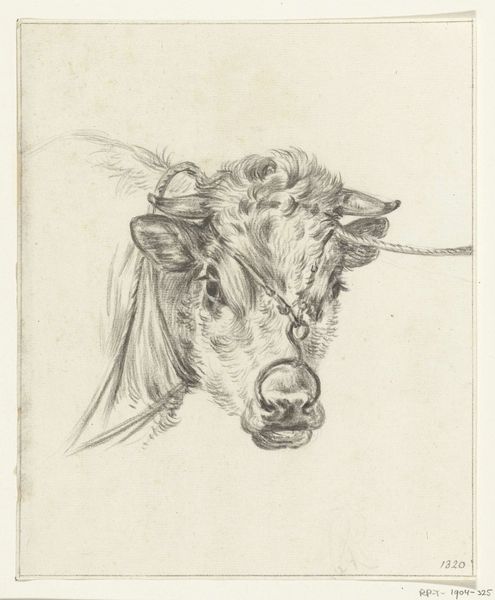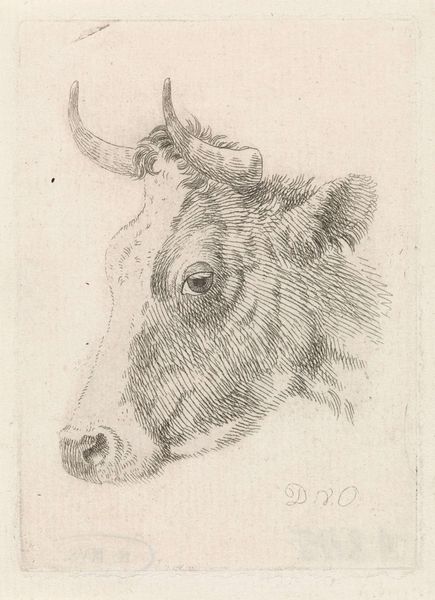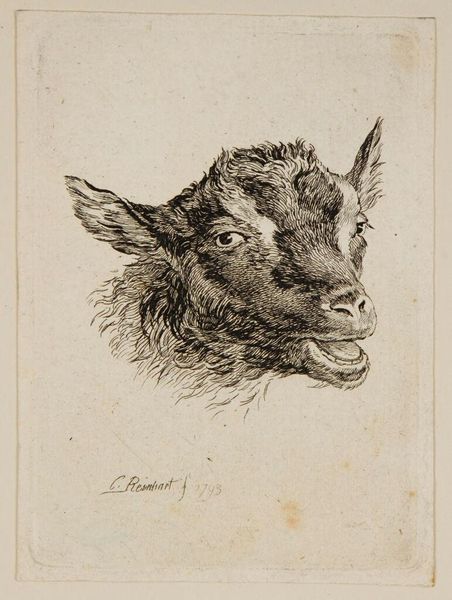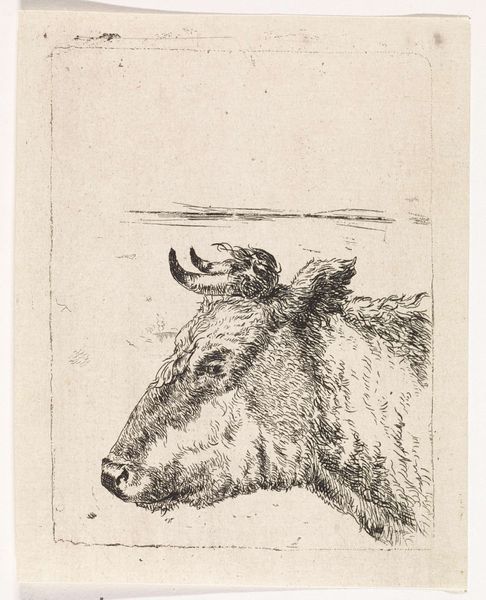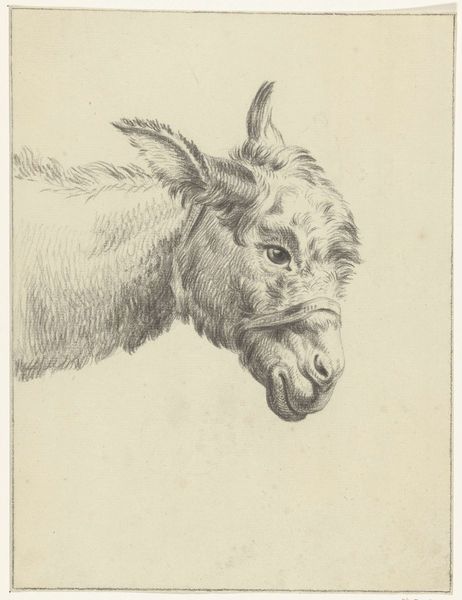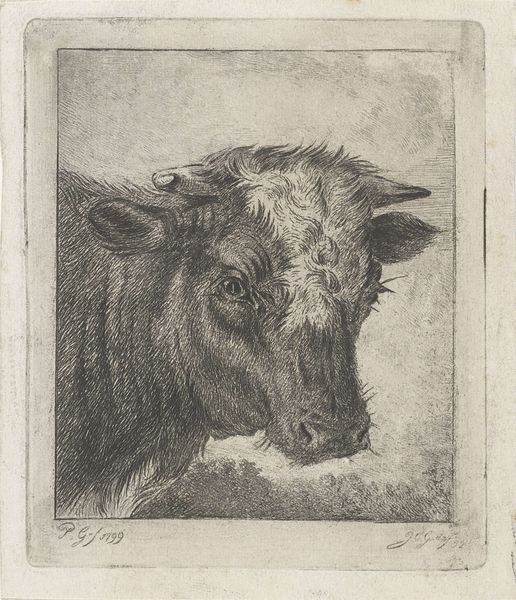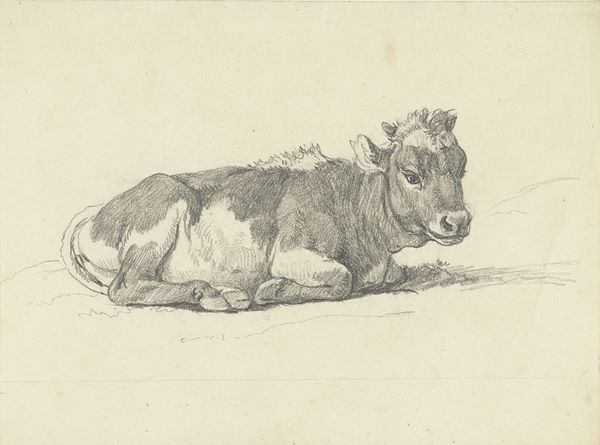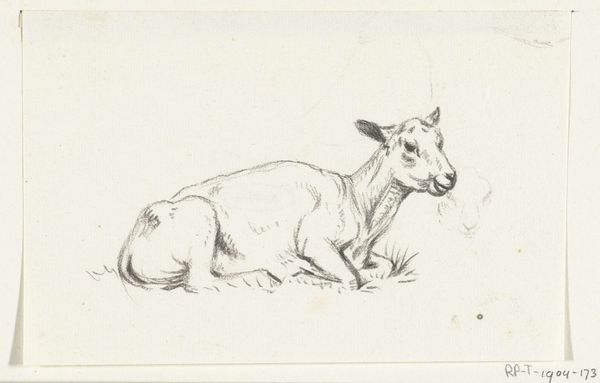
Head of a Buffalo, from Die Zweite Thierfolge 1800
0:00
0:00
drawing, print, etching, paper
#
portrait
#
pencil drawn
#
drawing
#
animal
# print
#
etching
#
paper
#
pencil drawing
#
line
#
realism
Dimensions: 147 × 106 mm (plate); 177 × 132 mm (sheet)
Copyright: Public Domain
Editor: Here we have Johann Christian Reinhart's "Head of a Buffalo, from Die Zweite Thierfolge," created around 1800. It's an etching and print on paper, currently residing at the Art Institute of Chicago. The detail captured in this image is really remarkable; I am amazed at how lively the line work looks despite the relatively muted coloration and traditional format. What do you see when you look at this print? Curator: Well, situating this print within its historical moment is key. Consider the period around 1800. The buffalo, a symbol of untamed wilderness, was becoming increasingly politicized as European settlers moved westward in places like America and as Romanticism elevated notions of "wild nature" within Europe itself. Editor: So, you are suggesting that portraying this buffalo head was also commenting on settlement? Curator: Perhaps not overtly, but art never exists in a vacuum. Think about how the means of representation—printmaking, in this case—also impacts the work’s message. Prints are reproducible. They're for wider distribution. What message do you think was intended? What political and artistic purposes did readily-distributed images of wildlife play at that time? Editor: Hmmm… that’s a good question. So, perhaps this relatively "realistic" style made this a document but also a political statement to encourage "scientific accuracy." Because the print can be readily made again and again, this image becomes very valuable as an attempt at documenting the world. That's interesting... Curator: Exactly! Think about how the emerging museums of the 19th century categorized and displayed such images alongside scientific specimens. It speaks volumes about the intertwined histories of art, science, and power. Editor: I had not thought of the museum display connection before. I suppose museums provided one path for viewers to consider artwork but at the same time imposed conditions on what artwork should be and accomplish. That is super fascinating. Thank you. Curator: My pleasure! Reflecting on art through this social, cultural, and historical context enables us to engage more thoroughly with its power.
Comments
No comments
Be the first to comment and join the conversation on the ultimate creative platform.
